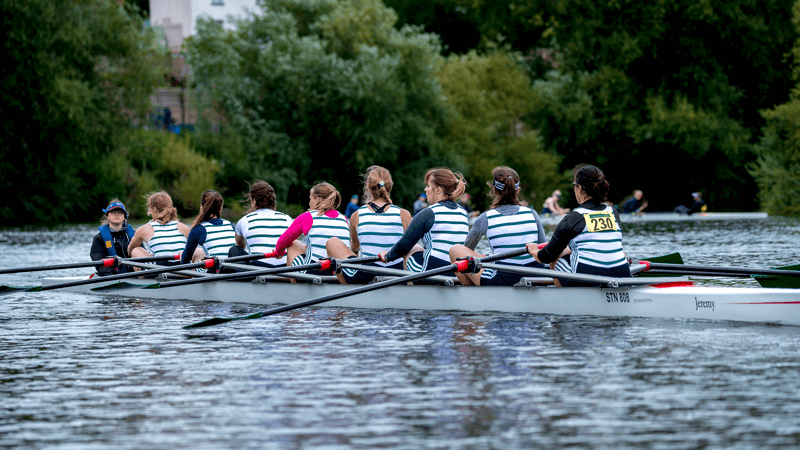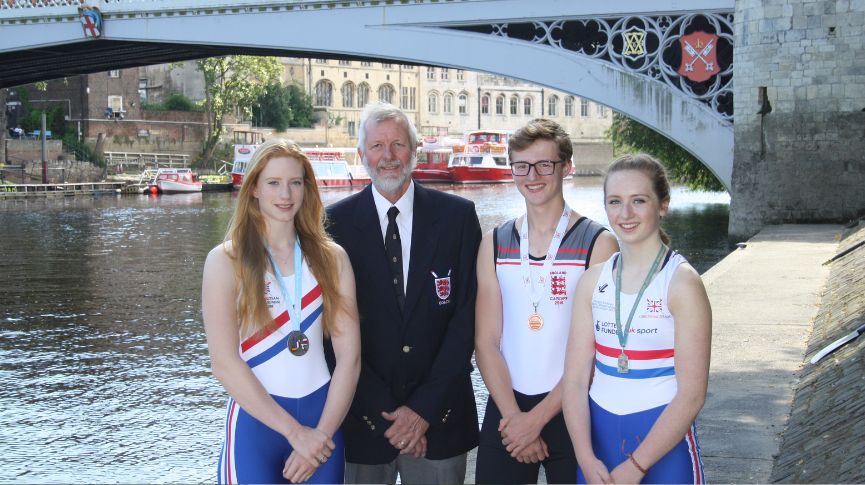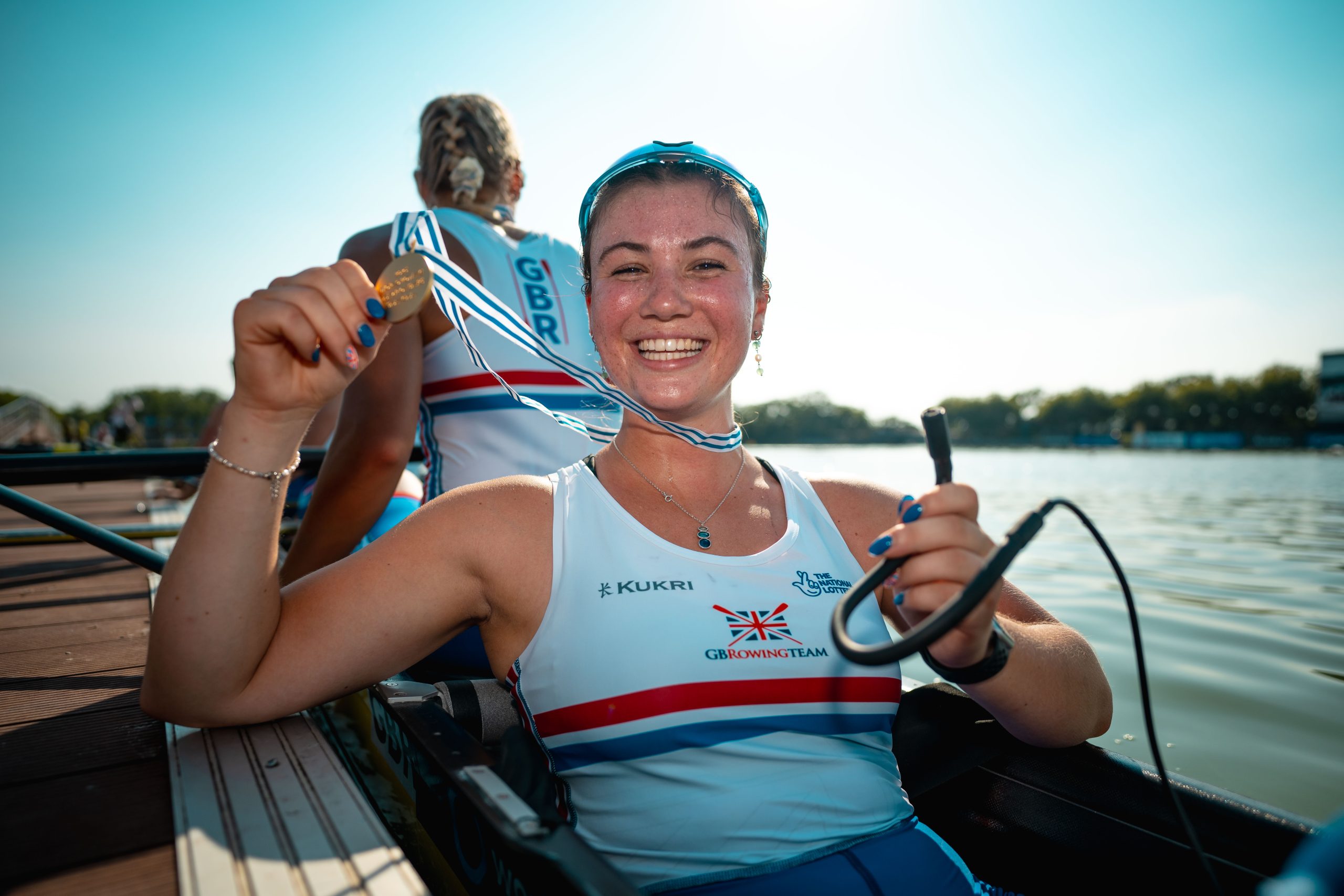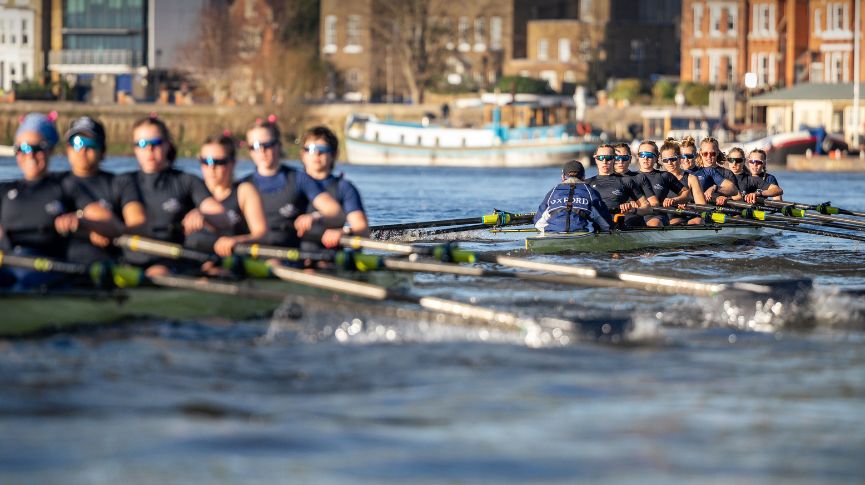Who sits where in a rowing eight?
How do rowing coaches decide which rower to put in which seat? Coach Consultant Robin Williams delves into the mysteries of positions in the 8+

© Drew Smith
One of the most successful coaches in the country, Robin Williams coached the GB women’s pair of Helen Glover and Heather Stanning to Olympic gold medals in 2012 and 2016. Here he shares his approach to building an eight.
With the Tideway heads a few weeks away, it is interesting to ponder how the coaches decide who sits where in their crews and why people are suited to certain seats.
In fact, given that all eight people are in the one hull rowing in time at the same rate and same intensity, how is it that each seat feels different – and does the rower’s technique need to take this into account?
Part of the answer is in the trim of the boat. The load experienced at stroke feels a little heavier and flatter than at bow, where it feels fast and there’s more rise and fall.
Bow
The bow pair have a key job in an eight because, while at stroke there’s a risk of overworking by picking up too much load, in the bows the risk is to under work. Here, the bow pair need to be really skilful to catch the water as the bows rise while producing the leg drive quickly.
Not only that, but because the bows are narrower than the rest of the boat, you don’t want fidgety people there or the balance can feel dreadful. If the boat is going off balance, a good bow pair can sometimes hold the finish a moment longer and preserve the stability for the crew without getting left behind in the recovery.
They can also make a verbal contribution and, when racing side-by-side, they have the advantage of seeing everything that’s happening when the stern pair might be feeling that they’ve lost contact with their opponents.
Between the cox at one end and the bow pair at the other, everyone can be kept on their toes and no one needs to feel isolated.
It is an old-fashioned fallacy that the ‘best’ person goes at stroke and the next best sit in order behind
Stroke
In a good eight everyone is stroke in a way because you don’t follow one person so much as all follow the hull and make the rhythm together. Everyone should row the boat together, making the rhythm as one.
However, stroke is a key seat because you can’t see anyone else but you can feel everything – is it heavy or light behind you? Is the boat accelerating and running well? Do the seat movements feel together or do they feel like random bowling balls?
Stroke also sits in front of the cox so is most able to communicate the things that need adjustment. All-in-all there are some particular skills required and not everyone has them, nor wants the job!
The stroke seat is the custodian of the technique and rhythm: he or she needs to feel how the hull is moving and understand how it can be fine-tuned along the way, working with the cox to make it happen.
As an individual, the stroke person does not need to be the strongest or biggest, but they do need to be aggressive and decisive – and, technically speaking, they need to be skilled movers, rather like the bow pair.
The crew has someone else’s back, head, slide or blade to use as a visual reference for timing and movement, but stroke just has empty space in front.
It’s quite easy to row too long, overreach, go off balance over the stretcher and mistime the pick-up. So a good tip for this seat is to row an effective length rather than the maximum possible: not biting off more load than can be used and making sure there’s a really good timing and flow around the catch.
As stroke, having made your entry and become connected, be careful about driving unless you feel the others are there with you – especially in less competent boats because someone is usually late!
Anyone who has done some stroking knows how much trust is involved in those behind. When the starter says ‘go’ you have to believe that the others will go with you, but it takes trust because you cannot see them, only feel them.
Rowers may be physically suited to a particular seat but do they have the personality for it too?
7, 6, 5, 4 and 3 seats
The seven and six seats are key in this process. If stroke can be given a little ‘discretion’ with length and power in the interest of setting and maintaining a strong and continuous output, the ones sitting behind need to guarantee length and physical delivery to create the trust that stroke can go as hard as he / she wants.
Six also needs to be technically strong with a simple legs-on, back-through movement which the middle four then pin their rhythm around. When you sit in the middle of an eight the back swing is highly visible so if the middle four cement that basic drive, then the whole eight can feel dynamic and well glued together.
The four seat is roughly where the trim of the see-saw has its mid-point so is generally stable. Although, arguably, three and four are the easiest seats technically, it is also true that there’s less feedback from the hull with the stern dip / bows rise, so these rowers need to tie in well to the body movements around them.
Plus, it is an old-fashioned fallacy that the ‘best’ person goes at stroke and the next best sit in order behind with the bow being the ‘worst’. Everyone matters and has a job to do – and, of course, if one person moves out of sync with the others then the boat is split at that point, so these seats are vital to avoid the bow rowers being cut off from the stern.
So which seat?
All in all, you just need a bit of understanding about the hull movement to appreciate the technique required in each seat. But there is more to it.
Rowers may be physically suited to a particular seat but do they have the personality for it too? Do they complement the people directly in front and behind? Does the way they use their back or hold their head encourage the one behind to relax and move with them, or does their body language make them row tight and weaken the rhythm?
Does it need their verbal input or are they better keeping quiet?
Such are the mysteries of racing eights!
This article first appeared in Rowing & Regatta magazine.






